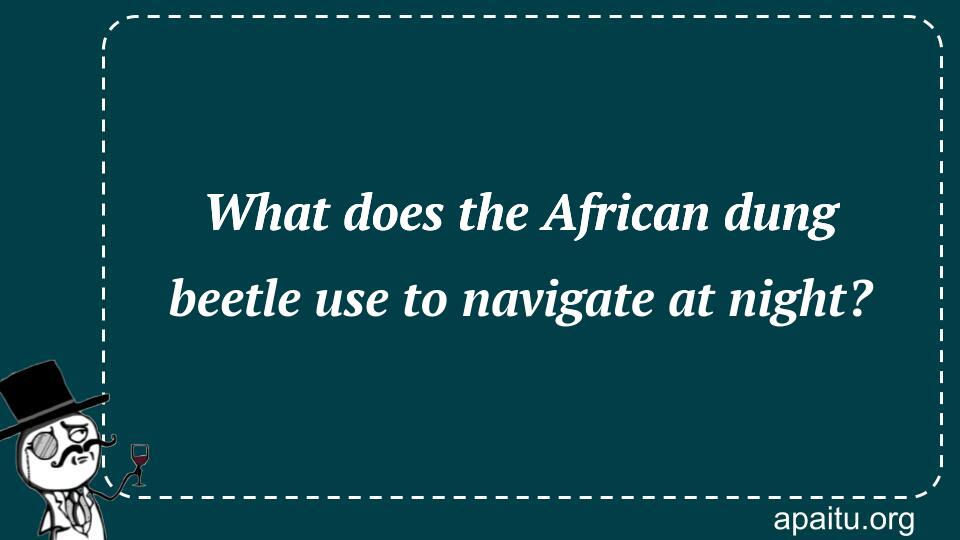Question
Here is the question : WHAT DOES THE AFRICAN DUNG BEETLE USE TO NAVIGATE AT NIGHT?
Option
Here is the option for the question :
- The scent of their food
- The Milky Way galaxy
- Their tongues
- Elevation changes
The Answer:
And, the answer for the the question is :
Explanation:
The only non-human organism outside humans that is known to travel utilising the Milky Way galaxy is the dung beetle. In an experiment, some beetles were given hats that obscured their view of the sky, while others were given hats that allowed them to see the stars. This allowed the scientists to assess the insects’ ability to navigate. In addition to this, it is said that dung beetles are the most powerful insects in the world, as they are able to lift up to 50 times their body weight.

The African dung beetle, a remarkable creature found in various regions of Africa, possesses a unique ability to navigate at night using an extraordinary celestial guide—the Milky Way galaxy. This fascinating behavior has intrigued scientists and nature enthusiasts alike, shedding light on the remarkable adaptations and strategies employed by these beetles to find their way in the dark. By relying on the light emitted by the stars of the Milky Way, African dung beetles have evolved an intricate navigation system that allows them to efficiently roll their dung balls away from competition and potential predators.
In the African savannah, where the African dung beetle thrives, competition for limited resources is fierce. Dung beetles play a vital role in the ecosystem by recycling animal waste and enriching the soil. To ensure their survival and reproductive success, these industrious insects must efficiently locate and transport dung to a suitable location where they can bury it for feeding and reproduction.
One might wonder how a small beetle, measuring just a few centimeters in length, can navigate across vast distances and challenging terrains, especially during the dark hours of the night. The answer lies in their remarkable ability to perceive and utilize the pattern of light provided by the stars in the night sky, particularly the distinct band of the Milky Way.
Researchers have discovered that African dung beetles possess specialized photoreceptor cells in their eyes that are sensitive to polarized light. These cells allow the beetles to detect the polarization patterns of the moon, the sun, and even the stars. By observing the polarization of light, the beetles can determine their position and orientation relative to their desired direction of travel.
The utilization of the Milky Way as a navigational tool is particularly fascinating. On moonless nights or in areas with obstructed moonlight, the stars of the Milky Way provide a consistent and reliable source of light for the dung beetles to orient themselves. The band of the Milky Way, stretching across the night sky like a luminous highway, offers a fixed reference point for the beetles to maintain a straight path while rolling their dung balls.
To conduct their experiments, scientists have observed and studied the behavior of African dung beetles in controlled environments and under simulated starry skies. These studies have revealed that when the beetles are disoriented or placed under artificial conditions that disrupt the natural polarization patterns of the sky, they exhibit navigational difficulties. However, when the beetles are exposed to an accurate representation of the night sky, including the Milky Way, their navigation abilities are restored.
The reliance of African dung beetles on the Milky Way for navigation is a remarkable example of nature’s ingenuity and adaptation. It highlights the intricate ways in which organisms have evolved to utilize envi